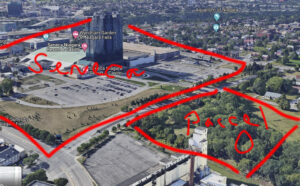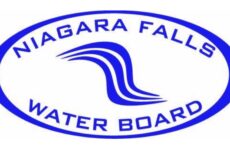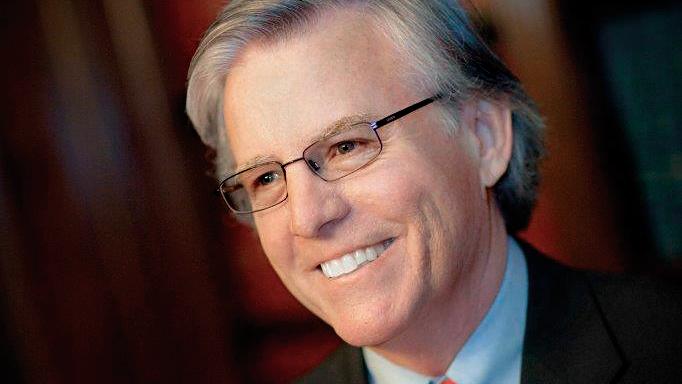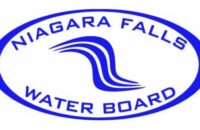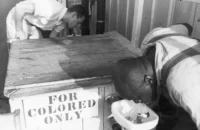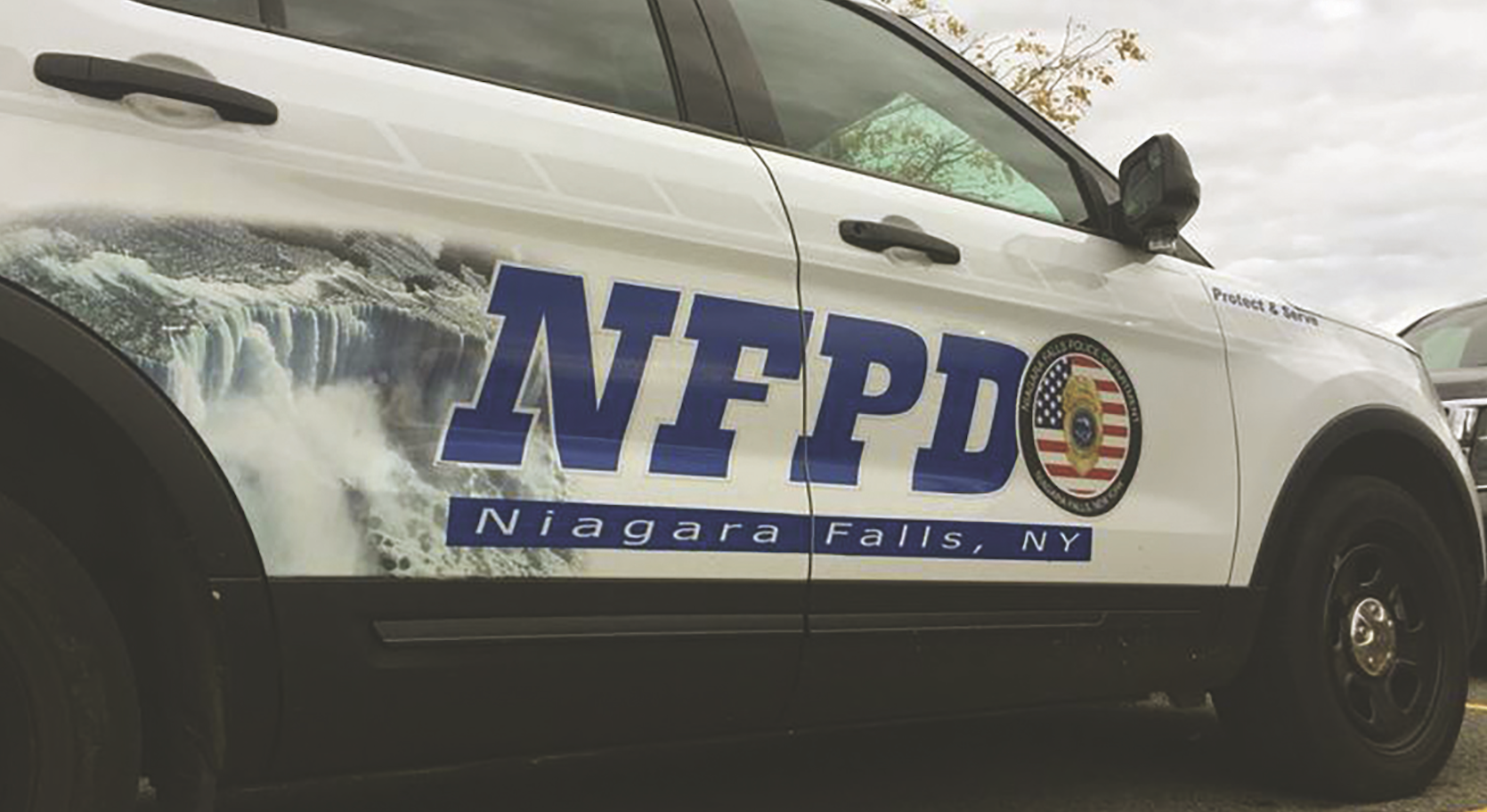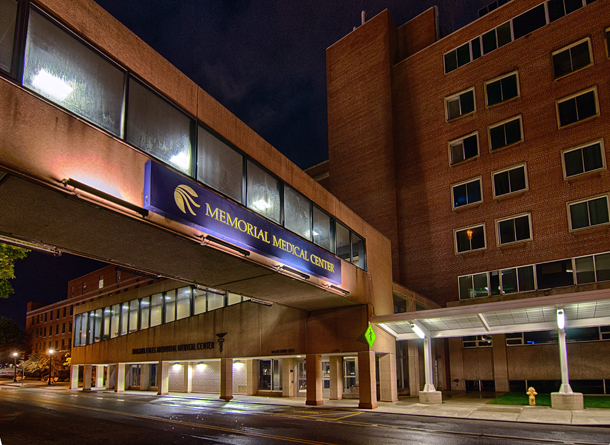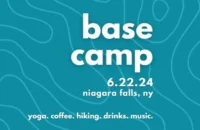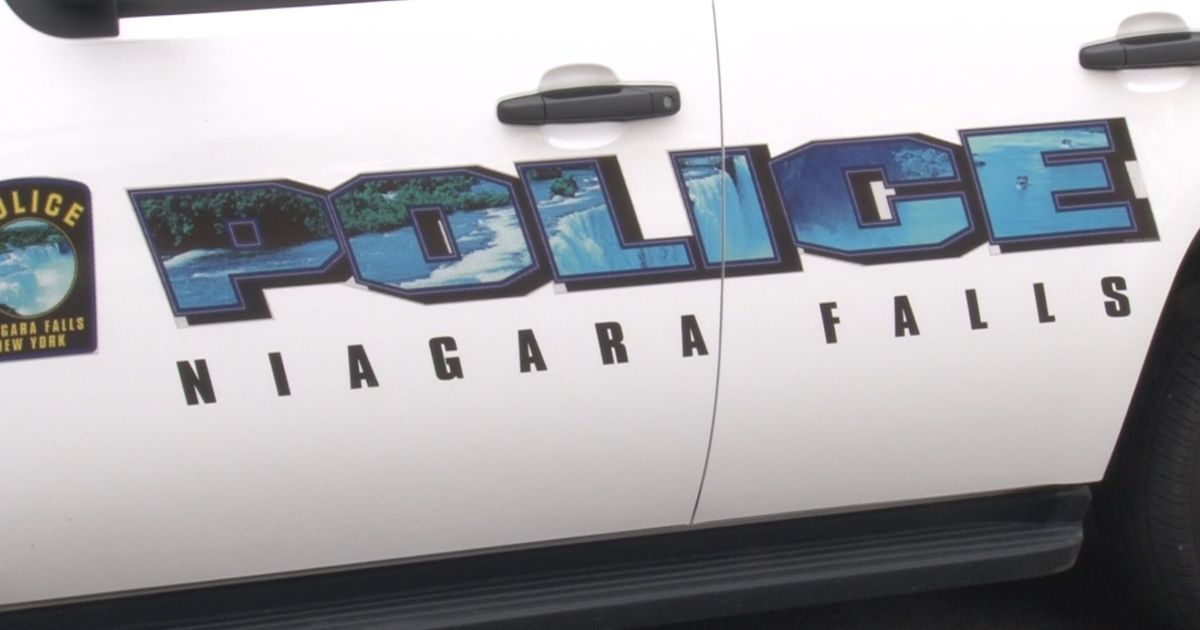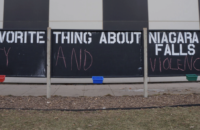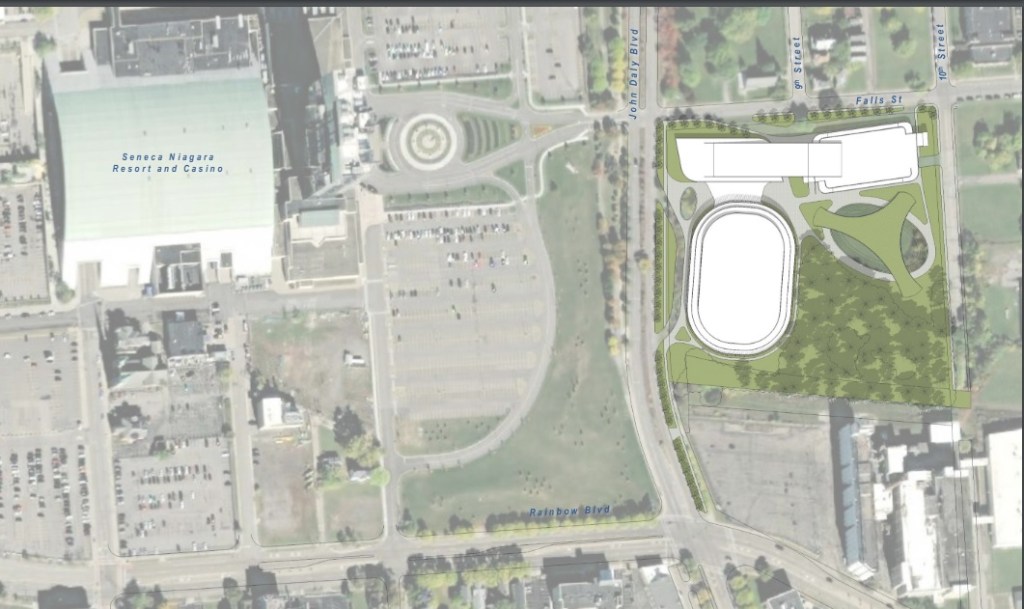
By Richard Luthmann
Niagara Falls Mayor Robert Restaino is a lawyer and former judge. But he sure isn’t acting like one with the Centennial Park deal.
Centennial Park and Events Center Proposal
Centennial Park is a planned 7,000-seat events center and a small adjacent park.
Restaino began an eminent domain proceeding against Niagara Falls Redevelopment [NFR], seeking to extract ten acres [Parcel 0] from the company’s 140-acre property in the East Falls area for the site for Centennial Park.
The selected site is far from the city’s hotels, bars, and restaurants but right across the street from the Seneca Nation Casino and tax-free hotel and restaurants.

The mayor’s site choice favors the tax-free Seneca Nation over Niagara Falls businesses.
No Agreement With the Seneca Nation
The mayor says he has a “commitment” from the Seneca Nation. Restaino talks about it as a deal. But does he have an “agreement”?
Politicians talk about commitments. Real estate developers talk about deals.
But lawyers talk about agreements – ironclad contracts written in black ink with transparent terms and no wiggle room.
Mayor Restaino never talks about that, probably because he doesn’t have one.
Or if he does, it’s a “secret agreement” no one is privy to.
Why is an agreement with the Seneca Nation important for the Centennial Park Project? Because the Seneca Nation is sovereign land. That means they can do anything they want with it, and the mayor has no recourse even if it negatively affects Niagara Falls and the business community.
Mayor Restaino needs a concrete legal agreement with the Seneca Nation. He needs an easement across sovereign lands.
Why? To protect Niagara Falls’ investment and economic activity if Centennial Park operates in the proposed location.
An Easement Agreement is Crucial
An easement, or easement agreement, is a real estate concept that defines a scenario in which one party uses the property of another party, where a fee is paid to the property owner in return for the right of easement.
Easement agreements are structured so that the property use is explicitly outlined. Restaino, a lawyer and former judge, has not disclosed any particular terms or promises between the City and the Seneca sovereign nation.
In Niagara Falls, the Seneca Nation generally permits individuals to freely cross onto its land and enjoy its Casino and amenities. But what happens if they decide to change how they operate?
What if the Seneca Nation allows ingress and egress across their land only at certain checkpoints? They obviously can do this. They have a right to their safety and security, whether the need is actual or pretextual.
This scenario would create a massive log jam when a big event is downtown – like the events planned for the 7,000-seat Centennial Park events center.
What if the Seneca Nation limits ingress and egress going east and west and only allows entry and exit onto its land from the north and south? The downtown Niagara Falls business district, already removed from the proposed arena, would be effectively blocked.
Local businesses would become unable to enjoy patronage before and after events. No one goes to a bar or restaurant they can’t walk to from an event space. If they get in their car, you lost them.
Moreover, the Seneca Nation could “open up” the eastern access to their land on event days to “funnel in” the crowds and keep the western access closed. This would ensure that the Casino and adjoining Seneca restaurants would receive nearly every dollar of economic activity generated by the mayor’s project.
The Seneca Nation will already receive the lion’s share of the economic benefit from the events center in its currently proposed location, to the detriment of downtown Niagara Falls businesses that pay taxes.
No Easement Risks Total Loss of Taxpayer Investment
There is already a running tab for the Centennial Park project. To take the land from NFR to build an events center adjacent to the Seneca Nation, the mayor must force NFR to sell through the legal process of eminent domain.
The process will take years and cost city taxpayers millions in legal fees. It has already cost hundreds of thousands of dollars of city funds, going to the mayor’s select attorney friends.
The lawsuit may not be successful. NFR is a strong company and has good lawyers. And some believe they have the better legal argument.
If the mayor successfully takes the property through eminent domain, the court will require the City to pay NFR for the land. Based on a previous eminent domain proceeding against NFR – which took seven years in court – Parcel 0 is worth a minimum of $20 million.
Many years and many millions will be flushed down the tubes unless there is an easement agreement now – not later – because the Seneca Nation can jump in and “game” the benefits of the entire project at the eleventh hour by enacting movement restrictions across their land on event days like the ones outlined above.
Don’t believe me? Then, ask yourself why parking goes from regular to “event rates” on certain days.
Because Parcel 0 is on the far side of the sprawling Seneca complex, most distant from city tourism businesses, an events center on Parcel 0 will allow the Seneca complex to provide an excellent buffer to keep visitors away from downtown businesses and flow into Seneca businesses.
The mayor’s currently proposed event center location effectively hands the Seneca Nation a monopoly, and Niagara Falls will have no recourse, legal or otherwise. For a lawyer and a former judge, Robert Restaino sure isn’t acting like it. He’s not acting within his fiduciary duty to protect Niagara Falls’s and its taxpayers’ interests.
The Niagara Street and Third Street Location Solves “Seneca Monopoly” Problem
The mayor’s selection of Parcel 0 ensures the events center is built closest to the Seneca Nation and separated from downtown taxpaying tourist businesses.
Yet the City already owns land on Niagara Street and Third Street. Local activist James Szwedo says this is a far better location for the events center. It is already next to the Rainbow Parking Ramp, and the site adjoins both the Seneca Casino property and the downtown Niagara Falls business district. The taxpaying businesses will share the economic activity generated by the 7,000-seat arena.
#1 is the Szwedo recommended location for the events center on city-owned land.
#2 is the already-built Rainbow Parking Ramp.
#3 is the Seneca Nation land.
#4 is Parcel 0, the mayor’s choice for the events center.
#5 is the downtown tourist district.
Note that Szwedo’s choice of location is much fairer and equitable. It puts the events center in the heart of the downtown business and tourism sector, and is still close to the Seneca Nation.
Conversely, Parcel 0 is only next to the Seneca property. If the events center is built on Parcel 0, patrons of events will find themselves across the street from one development, the Seneca complex. An events center on Parcel O would only be a feeder for Seneca enterprises.
Absent an easement agreement, the Seneca Nation can further “strong-arm” business over to its enterprise, excluding taxpaying Niagara Falls businesses.
The city-owned land on Niagara Street and Third Street is a better event center location. It avoids legal and economic development problems and considers the long-term best interests of Niagara Falls and its taxpayers.
Mayor Restaino should put on his lawyer hat and look at his Centennial Park plans before Niagara Falls faces another economic catastrophe.

